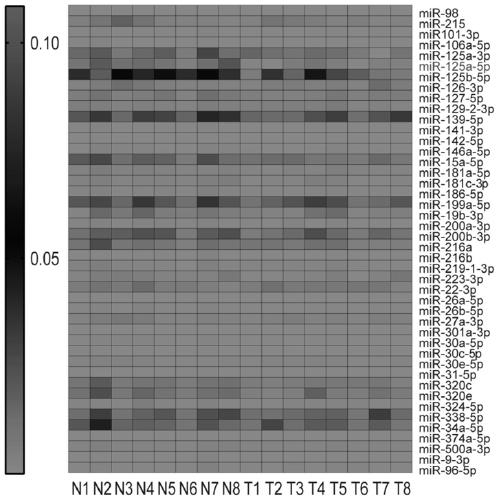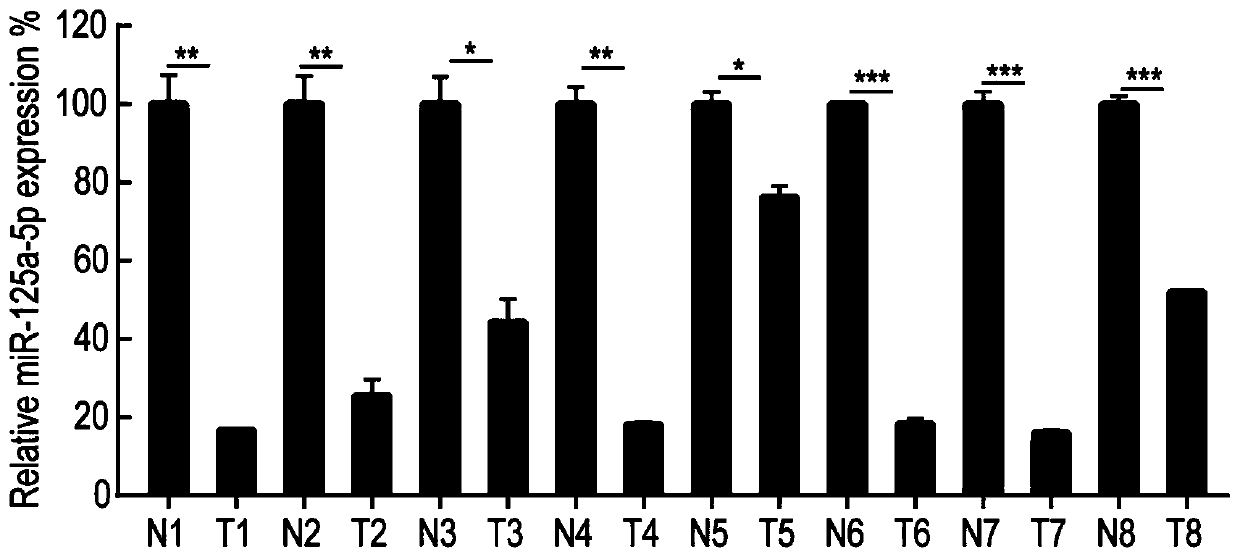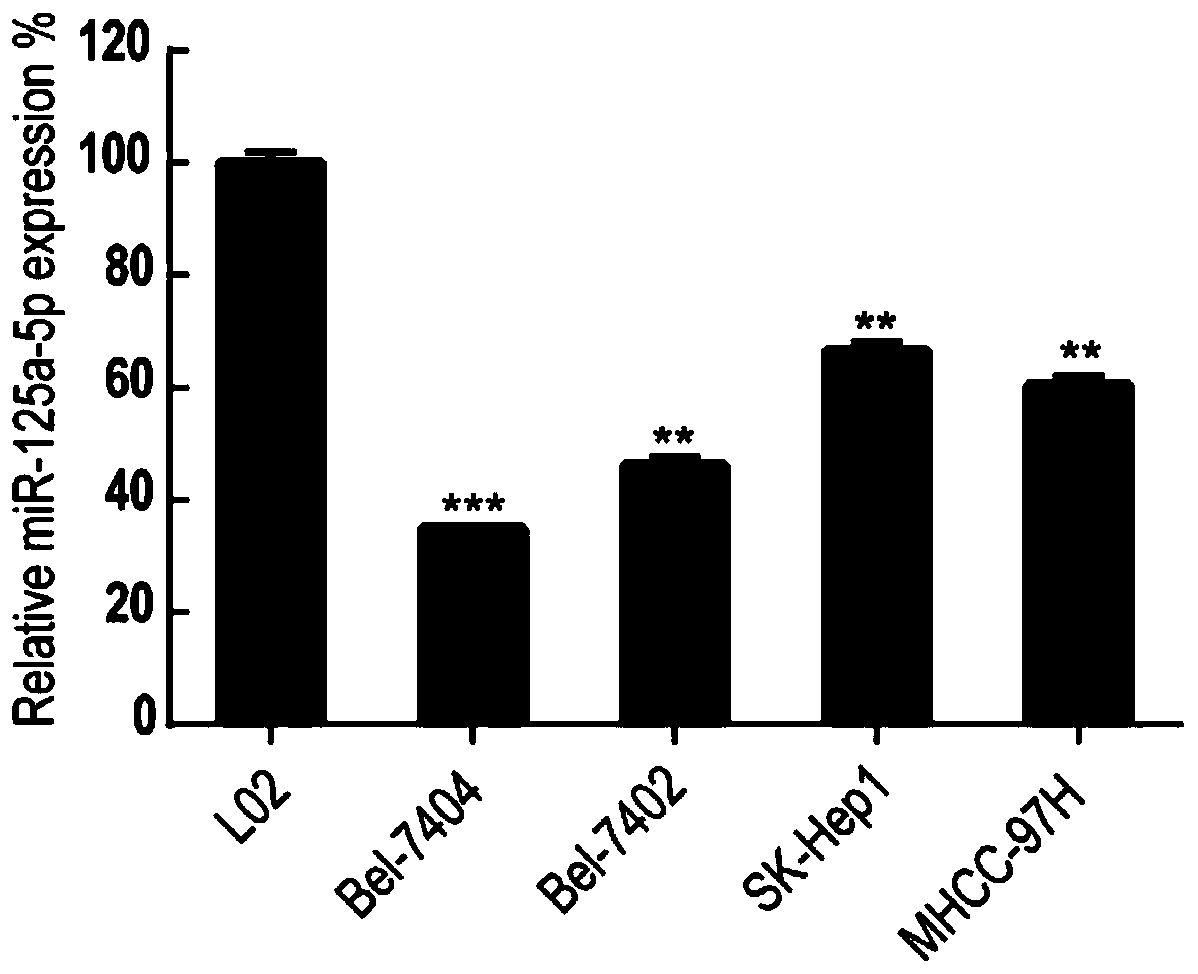Hepatoma diagnosis kit for detecting microRNA expression level and application thereof
A technology for detection reagents and diagnostic reagents, applied in the fields of biology and medical testing, can solve problems such as unreported liver cancer diagnostic kits, and achieve the effects of good clinical application value, strong clinical operability, and simple detection methods.
- Summary
- Abstract
- Description
- Claims
- Application Information
AI Technical Summary
Problems solved by technology
Method used
Image
Examples
Embodiment 1
[0049] Preparation of Example 1 Liver Cancer Diagnostic Kit
[0050] The production process and operation process of the diagnostic kit for detecting primary liver cancer patients are mainly based on PCR technology.
[0051] The expression level of microRNA in patients with primary liver cancer was screened by quantitative PCR and other techniques, and used as an index to predict the diagnosis of patients with primary liver cancer. The miR-125a-5p amplification primer pair sequence is shown in SEQID.2 and SEQID.3 (see Table 1), and the internal reference primer pair is shown in SEQID.4 and SEQID.5 (see Table 1).
Embodiment 2
[0052] Example 2 miRNA gene chip analysis
[0053] 1. Experimental method
[0054] 1. Cell culture: Human liver cancer cell lines Bel-7404, SK-Hep1, Bel-7402, MHCC-97H and normal liver cell L02 were obtained from American Type Culture Collection (ATCC, MD, USA). Liver cancer cells in the logarithmic growth phase were seeded in 6-well plates at a cell density of 5*105 per well, and all these cells were treated with 10% fetal bovine serum (FBS, Servicebio, G8001-500, China) and 1% The high glucose medium (DMEM, Sigma, RNBG6034, USA) of penicillin-streptomycin (KeyGen, KGY0023, China) was cultured in a 37°C incubator with 5% CO2.
[0055] 2. miRNA gene chip analysis
[0056] The miRNA gene chip analysis was carried out according to the routine operation method.
[0057] 2. Experimental results
[0058] Gene chip results such as figure 1 , The analysis results screened out the miRNA with difference——miR-125a-5p.
Embodiment 3
[0060] 1. Experimental method
[0061] 1. Cell culture: Human liver cancer cell lines Bel-7404, SK-Hep1, Bel-7402, MHCC-97H and normal liver cell L02 were obtained from American Type Culture Collection (ATCC, MD, USA). Liver cancer cells in the logarithmic growth phase were seeded in 6-well plates at a cell density of 5*105 per well, and all these cells were treated with 10% fetal bovine serum (FBS, Servicebio, G8001-500, China) and 1% Penicillin-streptomycin (KeyGen, KGY0023, China) was cultured in high glucose medium (DMEM, Sigma, RNBG6034, USA) in 5% CO 2 in a 37°C incubator.
[0062] 2. Extraction of total cellular RNA: centrifuge the cells obtained in the previous step at 1000×rpm for 5 minutes, collect the cells into 1.5ml centrifuge tubes, add 1ml Trizol (Sigma, MKCB9720, USA) to each tube, and gently Mix by pipetting, let stand at room temperature for 5 minutes, add 200 μl of chloroform to each tube, shake and mix vigorously for 30 seconds, and centrifuge at 12000×g ...
PUM
 Login to View More
Login to View More Abstract
Description
Claims
Application Information
 Login to View More
Login to View More - R&D
- Intellectual Property
- Life Sciences
- Materials
- Tech Scout
- Unparalleled Data Quality
- Higher Quality Content
- 60% Fewer Hallucinations
Browse by: Latest US Patents, China's latest patents, Technical Efficacy Thesaurus, Application Domain, Technology Topic, Popular Technical Reports.
© 2025 PatSnap. All rights reserved.Legal|Privacy policy|Modern Slavery Act Transparency Statement|Sitemap|About US| Contact US: help@patsnap.com



